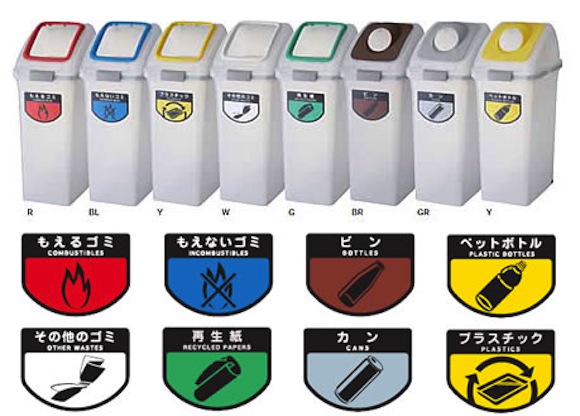
Is Japan’s recycling system the most complicated in the world? It sure feels like it sometimes. Household waste must of course be separated into burnable and non-burnable, but after that there’s a dizzying array of recycling categories to break your non-burnables into. Since Japan is a relatively small country without masses of land to use for burying waste, the vast majority of waste used to be incinerated. However, with increasing ecological awareness in the 1990s came new legislation to minimise the amount of waste being burnt, and promote recycling.
Public awareness of the need to recycle is high, but the system can be baffling for new foreign residents. The problem lies not only in the array of recycling categories, but also in the apparent overlap between them: the grey areas. Is an empty pizza box considered recycled paper? Or is it burnable? Paper packages? “Other”? And if a bottle is made of a different type of plastic to the standard PET, is still a “pet bottle”, or is it just “plastic”?
Today we bring you six reasons to learn what goes in what box, and a few hints for getting it right along the way.
1. It’s required by law
Well, for businesses, anyway. Under the excitingly-named Containers and Packaging Recycling Law, medium- and large-scale businesses are obligated to recycle all glass and plastic bottles, paper and plastic containers. See, we told you we love Japan!
Businesses have to pay – based on weight and volume – for recyclables to be collected, which also explains those signs outside convenience stores that tell you not to put trash in that’s not from their store.
▼ “Please, quit bringing your trash here!”
2. No-one’s gonna do it for you
In my native England, recycling collection varies from city to city – just as it does in Japan – but kerbside sorting is common: you put all your recyclables (cardboard, glass, plastic) in one container all mixed up, and when the waste collection guys come round they sort it for you, throwing the different types of recyclables into different parts of their giant truck. There’s one important reason for this: properly trained staff are much better at sorting trash than us ordinary British folk, so having the professionals do it is actually a good way to minimise waste.
In Japan, however, the onus is on citizens to sort their own trash correctly, and they’re pretty good at it: national recycling rates for aluminium cans, for example, come in annually at well over 90%. After the 2011 East Japan earthquake and tsunami, displaced residents in Tohoku were praised for continuing to sort their trash for recycling, despite the fact they were living in emergency shelters in the wake of a large-scale natural disaster. Even in non-emergency situations, though, Japanese people tend be pretty diligent about following recycling rules, not least because if you don’t, you might end up with…
3. The red sticker of shame
Recycling (and combustibles, too) has to be put out in local-authority designated clear bags – so if you put the wrong thing in the wrong bag, you might well find your trash left at the collection point with a doom-inducing sticker on it explaining your misdemeanour. And then everyone in the neighbourhood will know that you hate the planet.
▼ Red card! “This trash cannot be accepted.”
4. Japanese textbooks are full of it
I swear one of the first words I learned in a textbook after coming to Japan was bunbetsu (分別, the separation of rubbish when recycling). Whether you’re studying JLPT exam materials or a more integrated course, separating trash correctly is bound to turn up in your Japanese textbook soon enough, probably in some painfully didactic situation that goes a bit like this:
Bill is outside the apartment block. He sees a woman from the neighbourhood.
Bill: Good morning! It’s a beautiful day today, isn’t it!
Woman: Oh, Bill-san, good morning! Oh… oh no! Bill-san, you can’t put out old video cassettes on Tuesdays. Video cassettes have to go out on the third Wednesday of the month. And I noticed last week you put your trash out the night before the collection! You can’t do that. Please only take it out before 7 am on the day of collection like everybody else.
Bill: Oh, I am very sorry. Thank you so much for your kind advice. I will be more careful.
See? Even perfectly fluent exchange students make mistakes sometimes! If you’re studying Japanese, check your textbook for trash-related apology phrases. You’re going to need them at some point.
5. Endless rules in endless languages
Sure, there might be nine different categories of recyclables and waste:
…but those rules are available – in most cities anyway – on a handy poster that you can cover your entire fridge door with! And it’s available in (wait for it) English, Japanese, Chinese, Korean, Portuguese, Spanish, Filipino and Italian. What’s your excuse?
6. You can leave the packaging in the store anyway
As Japanese blogging site Madame Riri pointed out in an article last month that asked why Japan is so darn good at recycling anyway, Japan has an overpackaging problem. Although there are more eco-oriented alternatives available (furoshiki, anyone?) it’s fair to say that Japan is pretty keen on wrapping up things that don’t need it. Individually wrapped bananas, corn on the cob, and even oranges are common sights.
▼We can’t say Kitty isn’t cute, but bananas already come with a wrapper… it’s yellow and biodegradable.
A side-effect of this packaging mania is that in supermarkets, there’ll often be a recycling bin right next to the cash register, where you can remove excess packaging from your goods as soon as you’ve paid for them. Sure, it’d be better if the supermarkets actually stopped plastic-wrapping corn and apples, rather than packaging them up and then allowing you to unpack them immediately, but it’s a start.
Ever the enterprising nation, Japan has come up with some impressive ways to use recycled materials, too. Tokyo’s Haneda Airport is built on an artificial island made of garbage, and there are brilliantly obscure recycling initiatives like The Japan Denture Recycle Association, a one-man venture based in Saitama Prefecture that recycles the metal from donated unused dentures, with proceeds going to UNICEF.
On a less extraordinary scale though, I’ve also found asking which trashcan something is supposed to go in can actually make a pretty good conversation starter with Japanese coworkers. Now if you’ll excuse me, I have to go and wash and hang out my milk cartons…
Sources: JCPRA, Madame Riri
Top image: lazrcat


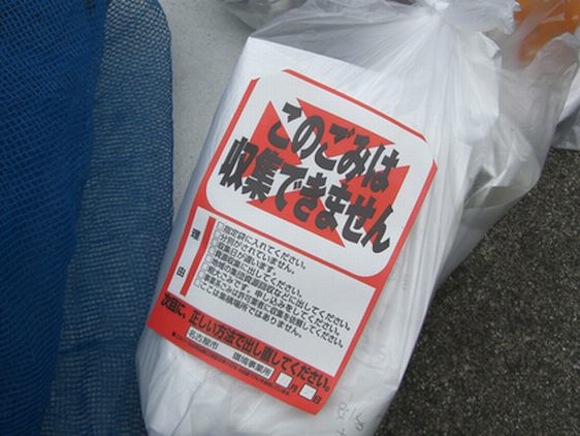

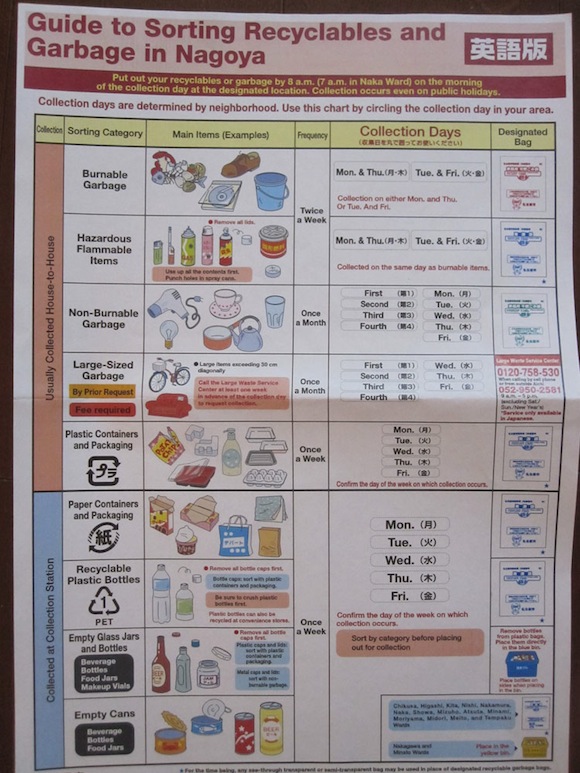
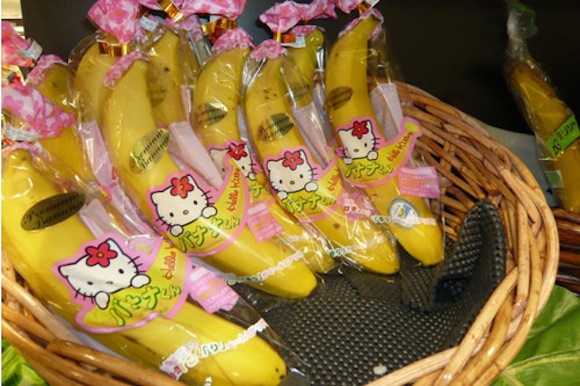
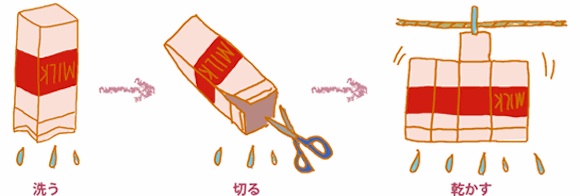
 Titan trash can to be placed near a Coca-Cola vending machine in Oita to help promote recycling
Titan trash can to be placed near a Coca-Cola vending machine in Oita to help promote recycling Why do Japanese recycle bins have two openings but dump everything into the same compartment?
Why do Japanese recycle bins have two openings but dump everything into the same compartment? How to dispose of pizza boxes: Life hack from Japanese garbage man goes viral online 【Video】
How to dispose of pizza boxes: Life hack from Japanese garbage man goes viral online 【Video】 Kyoto town changes names for burnable, landfill trash so people will think about what they’re doing
Kyoto town changes names for burnable, landfill trash so people will think about what they’re doing Kyoto’s newest anime mascot has a stinky name, is worried about garbage, and is a fairy
Kyoto’s newest anime mascot has a stinky name, is worried about garbage, and is a fairy One of Japan’s oldest castles now lets travelers spend night on the grounds, drink in its keep
One of Japan’s oldest castles now lets travelers spend night on the grounds, drink in its keep Bad tourist manners at Mt Fuji Lawson photo spot prompts Japanese town to block view with screens
Bad tourist manners at Mt Fuji Lawson photo spot prompts Japanese town to block view with screens Foreigner’s request for help in Tokyo makes us sad for the state of society
Foreigner’s request for help in Tokyo makes us sad for the state of society Foreign traveler caught trying to sneak into Japan by climbing down rope from cruise ship
Foreign traveler caught trying to sneak into Japan by climbing down rope from cruise ship All-you-can-drink deal for US$4 in Shinjuku is one of the best finds in Tokyo
All-you-can-drink deal for US$4 in Shinjuku is one of the best finds in Tokyo McDonald’s Japan’s new pancake pie is a taste sensation
McDonald’s Japan’s new pancake pie is a taste sensation Japanese city encouraging visitors and locals to cosplay as ninja for annual Ninja Festa
Japanese city encouraging visitors and locals to cosplay as ninja for annual Ninja Festa Starbucks at Shibuya Scramble Crossing reopens, but is it really bigger and better than before?
Starbucks at Shibuya Scramble Crossing reopens, but is it really bigger and better than before? Japanese-style accommodation at the new Premium Dormy Inn hotel in Asakusa will blow your mind
Japanese-style accommodation at the new Premium Dormy Inn hotel in Asakusa will blow your mind Studio Ghibli unveils massive T-shirt collection featuring top anime movie characters
Studio Ghibli unveils massive T-shirt collection featuring top anime movie characters Red light district sushi restaurant in Tokyo shows us just how wrong we were about it
Red light district sushi restaurant in Tokyo shows us just how wrong we were about it Japanese city loses residents’ personal data, which was on paper being transported on a windy day
Japanese city loses residents’ personal data, which was on paper being transported on a windy day McDonald’s new Happy Meals offer up cute and practical Sanrio lifestyle goods
McDonald’s new Happy Meals offer up cute and practical Sanrio lifestyle goods Japanese ramen restaurants under pressure from new yen banknotes
Japanese ramen restaurants under pressure from new yen banknotes Ghibli Park now selling “Grilled Frogs” from food cart in Valley of Witches
Ghibli Park now selling “Grilled Frogs” from food cart in Valley of Witches Two things to do, and two things not to do, when leaving a traditional Japanese inn
Two things to do, and two things not to do, when leaving a traditional Japanese inn New definition of “Japanese whiskey” goes into effect to prevent fakes from fooling overseas buyers
New definition of “Japanese whiskey” goes into effect to prevent fakes from fooling overseas buyers Our Japanese reporter visits Costco in the U.S., finds super American and very Japanese things
Our Japanese reporter visits Costco in the U.S., finds super American and very Japanese things All-you-can-drink Starbucks and amazing views part of Tokyo’s new 170 meter-high sky lounge
All-you-can-drink Starbucks and amazing views part of Tokyo’s new 170 meter-high sky lounge More foreign tourists than ever before in history visited Japan last month
More foreign tourists than ever before in history visited Japan last month New Pokémon cakes let you eat your way through Pikachu and all the Eevee evolutions
New Pokémon cakes let you eat your way through Pikachu and all the Eevee evolutions Disney princesses get official manga makeovers for Manga Princess Cafe opening in Tokyo
Disney princesses get official manga makeovers for Manga Princess Cafe opening in Tokyo French Fries Bread in Tokyo’s Shibuya becomes a hit on social media
French Fries Bread in Tokyo’s Shibuya becomes a hit on social media Sales of Japan’s most convenient train ticket/shopping payment cards suspended indefinitely
Sales of Japan’s most convenient train ticket/shopping payment cards suspended indefinitely Sold-out Studio Ghibli desktop humidifiers are back so Totoro can help you through the dry season
Sold-out Studio Ghibli desktop humidifiers are back so Totoro can help you through the dry season Japanese government to make first change to romanization spelling rules since the 1950s
Japanese government to make first change to romanization spelling rules since the 1950s Ghibli founders Toshio Suzuki and Hayao Miyazaki contribute to Japanese whisky Totoro label design
Ghibli founders Toshio Suzuki and Hayao Miyazaki contribute to Japanese whisky Totoro label design Doraemon found buried at sea as scene from 1993 anime becomes real life【Photos】
Doraemon found buried at sea as scene from 1993 anime becomes real life【Photos】 Tokyo’s most famous Starbucks is closed
Tokyo’s most famous Starbucks is closed One Piece characters’ nationalities revealed, but fans have mixed opinions
One Piece characters’ nationalities revealed, but fans have mixed opinions We asked a Uniqlo employee what four things we should buy and their suggestions didn’t disappoint
We asked a Uniqlo employee what four things we should buy and their suggestions didn’t disappoint Bandai launches Gunpla Recycling Project to reuse Gundam anime model kit plastics
Bandai launches Gunpla Recycling Project to reuse Gundam anime model kit plastics Japanese city changes “burnable trash” bags to “the only option is to burn this trash” bags
Japanese city changes “burnable trash” bags to “the only option is to burn this trash” bags The Japanese art of making trash containers from old papers
The Japanese art of making trash containers from old papers Japanese otaku now have special trash box just for merch of their former anime and idol crushes
Japanese otaku now have special trash box just for merch of their former anime and idol crushes Pet crematorium in Japan was burning trash with animals for more than 10 years
Pet crematorium in Japan was burning trash with animals for more than 10 years Uniqlo Japan will pay you for your old clothes with new recycling project Re:Uniqlo
Uniqlo Japan will pay you for your old clothes with new recycling project Re:Uniqlo Sharpening these colored pencils will give you beautiful flower petals
Sharpening these colored pencils will give you beautiful flower petals Sumida River Fireworks Festival aftermath: Not everyone in Japan has perfect manners after all
Sumida River Fireworks Festival aftermath: Not everyone in Japan has perfect manners after all Retailer Muji converts all plastic beverage bottles into aluminum cans
Retailer Muji converts all plastic beverage bottles into aluminum cans Japan’s secret garbage problem–and what you can do to help
Japan’s secret garbage problem–and what you can do to help Japanese student criticised for campaign against excess plastic packaging
Japanese student criticised for campaign against excess plastic packaging Five surprises and one disappointment about life in Japan from our expat friend
Five surprises and one disappointment about life in Japan from our expat friend We travel to Fuji to see how they make Japanese toilet paper
We travel to Fuji to see how they make Japanese toilet paper Divine prevention – Japan using Shinto symbols to combat litter and public peeing
Divine prevention – Japan using Shinto symbols to combat litter and public peeing
Leave a Reply